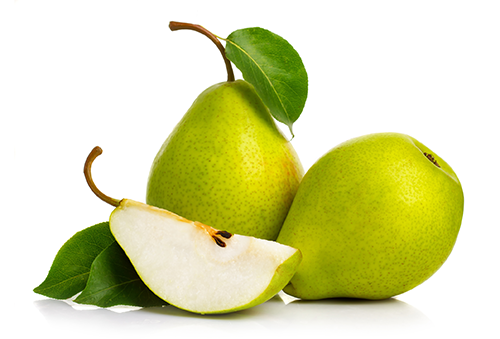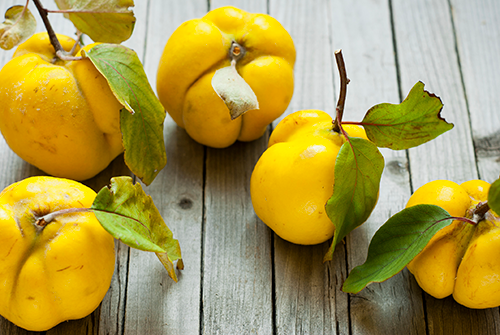Pears. As part of fruits and veggies month, Thrive! is featuring a few favorite fruits and veggies. A whopping 90 percent of adults and children don’t get enough fruits and veggies. So, add this one to your shopping list this week!
HISTORY OF PEARS
Not many fruits have been called a “gift of the gods,” but according to the famous poet, Homer, that is just what a pear is. Throughout the Greek and Roman culture, this fruit has been as a valuable and versatile fruit. They have also been subjects of many famous artists throughout history, whether in a painting or the famous Christmas song, “The Twelve Days of Christmas.”
They were brought to America with the early colonists settling near the eastern coast. The pears thrived in the new environment until crop blights prohibited further growth. Fortunately, settlers continued to bring this delicious fruit with them across the country, and by the 1800s this fruit was flourishing in the Northwest. Washington and Oregon continue to be major producers of this fruit today.
FUN FACTS
- Washington’s fresh pear productions are the largest in the United States.
- Combined, the annual harvest for Washington and Oregon currently averages over 442,000 tons.
- Washington and Oregon export about 35% of their crop to more than 50 countries around the world.
- About a quarter of the overall pear crop is canned.
SEASON
The season depends on the type of pear you are buying, but the first batch comes in season in the late summer. In warmer climates, pears are ready to pick in August and September in colder climates in September. The next batch is in season during the fall. This is the harvest you will mostly see in grocery stores around the country. They are typically ripe and ready to eat in October. Asian pears are in season beginning in July.
ATTRIBUTES
There are many varieties to choose from, but there are two main umbrellas they fall under Asian Pears (or Apple Pears) and the regular pear. Asian pears have a texture and shape that is similar to an apple, rather than a regular pear, hence the name. They are best eaten crisp. Regular pears ripen once they are removed from the tree. They pluck them from the trees and store them for a “brief chilling period” after which they ripen from the inside out. Pears can be a variety of colors from yellow to brown, and they all taste delicious.
WHAT YOU SHOULD LOOK FOR
When shopping at the store for pears, you will want to press your finger where the stem of the pear joins the fruit. If you want to eat the pear in the next day or two, you will want the skin of the pear to give a little under your finger. If, however, you want to eat the pear after a couple of days, you will want it to be firm there. The pear will ripen in the next few days. You do not want to buy pears that are soft anywhere except for near the stem because this means it is too ripe. On the other hand, when buying Asian pears, you want the entire pear to be firm. A ripe Asian pear, ready to eat, will be more brown or yellow, and a pear that will ripen in the next couple of days will be green.
NUTRITION
Pears are loaded with fiber. They provide 18% of the daily requirement for fiber intake. This fiber will help regulate bowel movement and all around improve your digestion. Pears are also loaded with a lot of potassium. Potassium helps lower blood pressure which will help prevent cardiovascular conditions and attacks. The vitamin C present in the pear can also help keep your metabolism kicking, and the ascorbic acid will help speed up the healing process. Finally, pears have a lot of healthy minerals that will help keep your bones strong and prevent bone mineral loss.
STORAGE
You should store pears at room temperature. The pears will ripen fairly quickly, only a few days, but if you want them to ripen more quickly ”place the pears in a paper bag with a ripe banana or apple – these other fruits… [will] speed up the ripening process.” If the pears are ripe you should store them in the refrigerator, and they will remain ripe and ready to eat for a couple of weeks.
HOW TO ENJOY
 Pears are delicious when fresh. You can devour a pear the same way you devour an apple, just avoid the stem and seeds. Pears are also used in a variety of jams and preserves, and work wonderfully in desserts. Checkout THIS LINK for some wonderful recipes using pears, enjoy!
Pears are delicious when fresh. You can devour a pear the same way you devour an apple, just avoid the stem and seeds. Pears are also used in a variety of jams and preserves, and work wonderfully in desserts. Checkout THIS LINK for some wonderful recipes using pears, enjoy!



